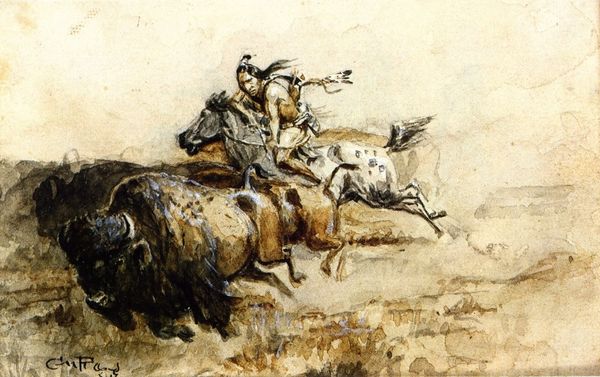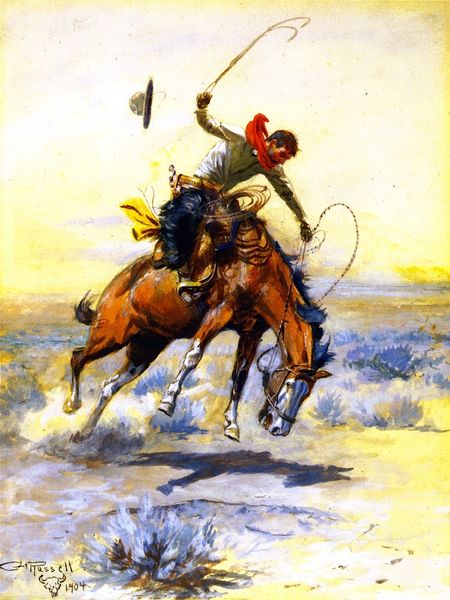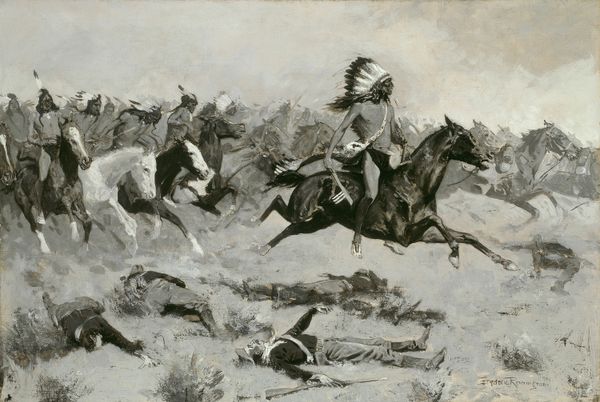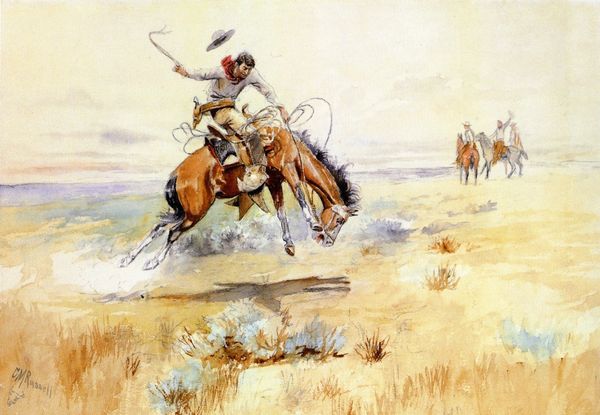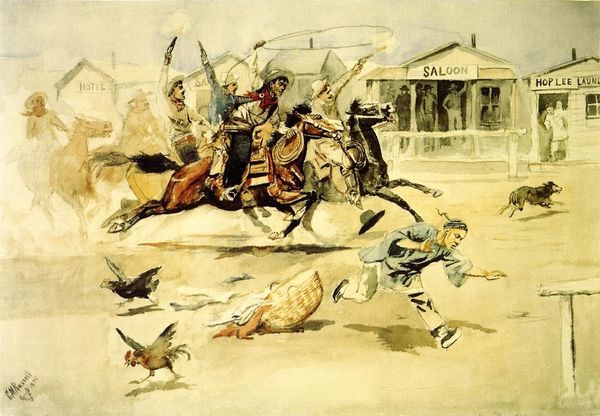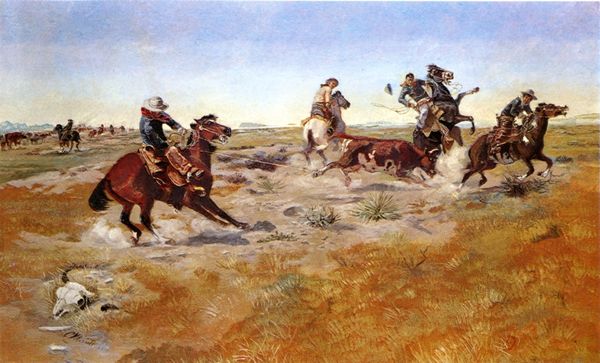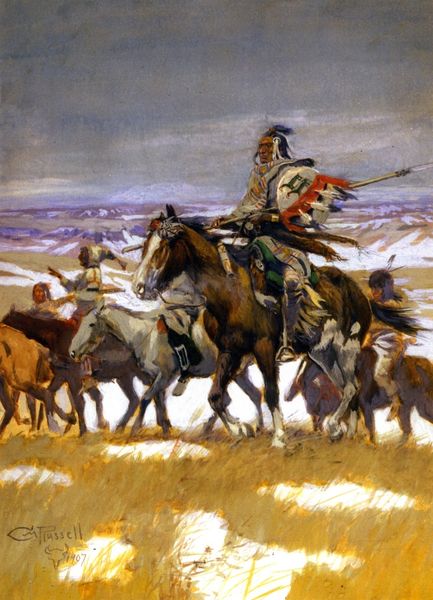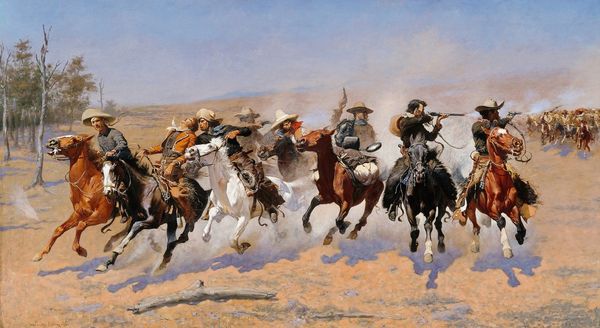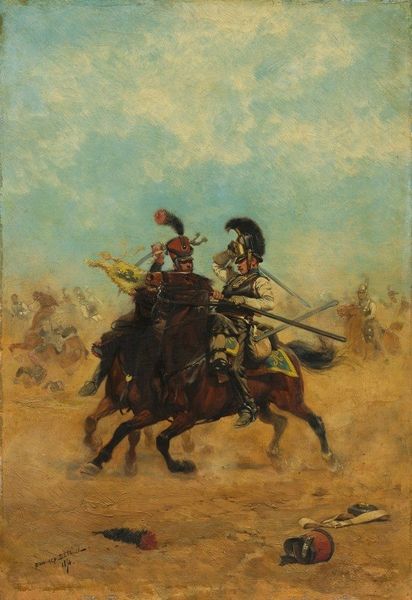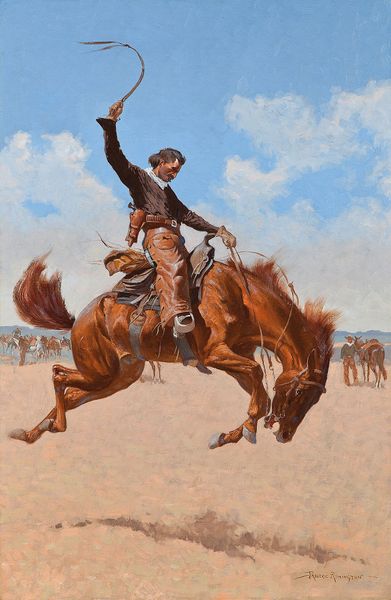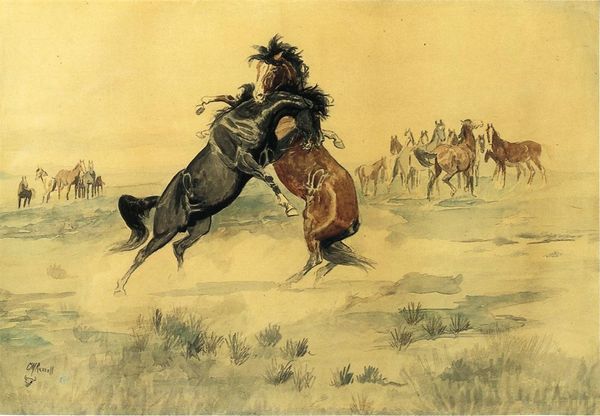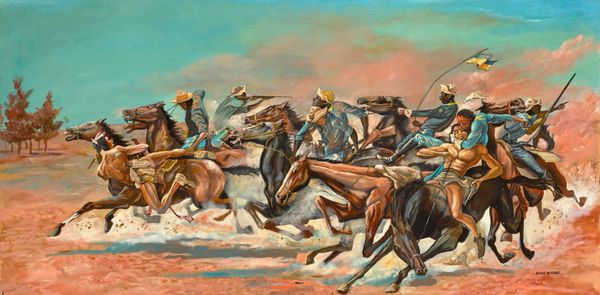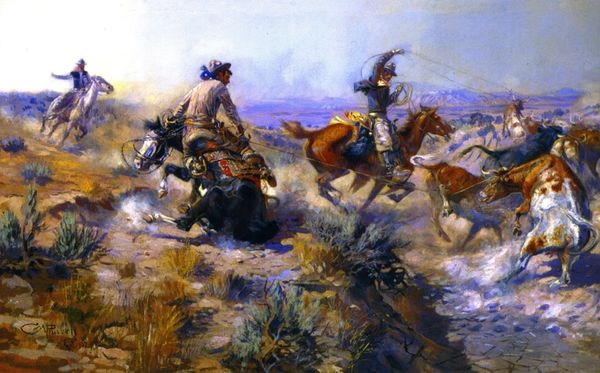
painting, oil-paint
#
figurative
#
narrative-art
#
fantasy art
#
painting
#
oil-paint
#
painted
#
genre-painting
#
history-painting
#
realism
Copyright: Public Domain: Artvee
Curator: Dean Cornwell’s "The Stick-Up," painted in 1924, confronts us with a stark depiction of the American West. Editor: The first impression is one of dramatic tension—the stark composition focuses all the energy on the immediate threat between the two figures. Curator: Exactly. Notice Cornwell's deliberate arrangement: the aggressor to the left, weapon drawn, balanced by the figure on the right with hands raised. Semiotically, the gun signifies power, while the raised hands denote surrender or helplessness. Editor: Yet, consider the context of its time. The "Wild West" was deeply romanticized and, frankly, whitewashed. I question how such a theatrical presentation, likely for illustration, plays into the problematic glorification of violence inherent in the taming of the West narrative. Curator: Your point is noted. Still, even considering the context, observe the realism in the figures themselves. The careful detailing in the men’s expressions, their attire—how might the arrangement of color further contribute? Editor: The dominance of brown tones lends the painting a sense of gravity, grounding it. This highlights the absence of other diverse racial groups in its world, implicitly supporting its narrative that silences others in service of manifest destiny. It reflects the societal anxieties and power dynamics of the time. Curator: Indeed, this raises questions about historical representation and the choices the artist makes to evoke a particular mood, however controversial. Regardless, the sheer dynamism within the scene is impressive. The artist emphasizes the diagonal line from the gun, upward toward the raised arms, creating tension, pulling our eyes between the two figures. Editor: Ultimately, the painting serves as a historical artifact and also demands scrutiny. While visually compelling, it requires critical consideration of the dominant ideologies it may perpetuate, its themes reflecting power, control, and, indeed, what was understood to be "American" in the early twentieth century. Curator: Precisely, a closer formal and contextual analysis reveals much more about the artist's technical skills, its history, and how these skills are employed within specific sociocultural moment in time. Editor: And by exploring its underlying meanings, we might develop our sense of the moment while recognizing its broader societal impact.
Comments
No comments
Be the first to comment and join the conversation on the ultimate creative platform.
